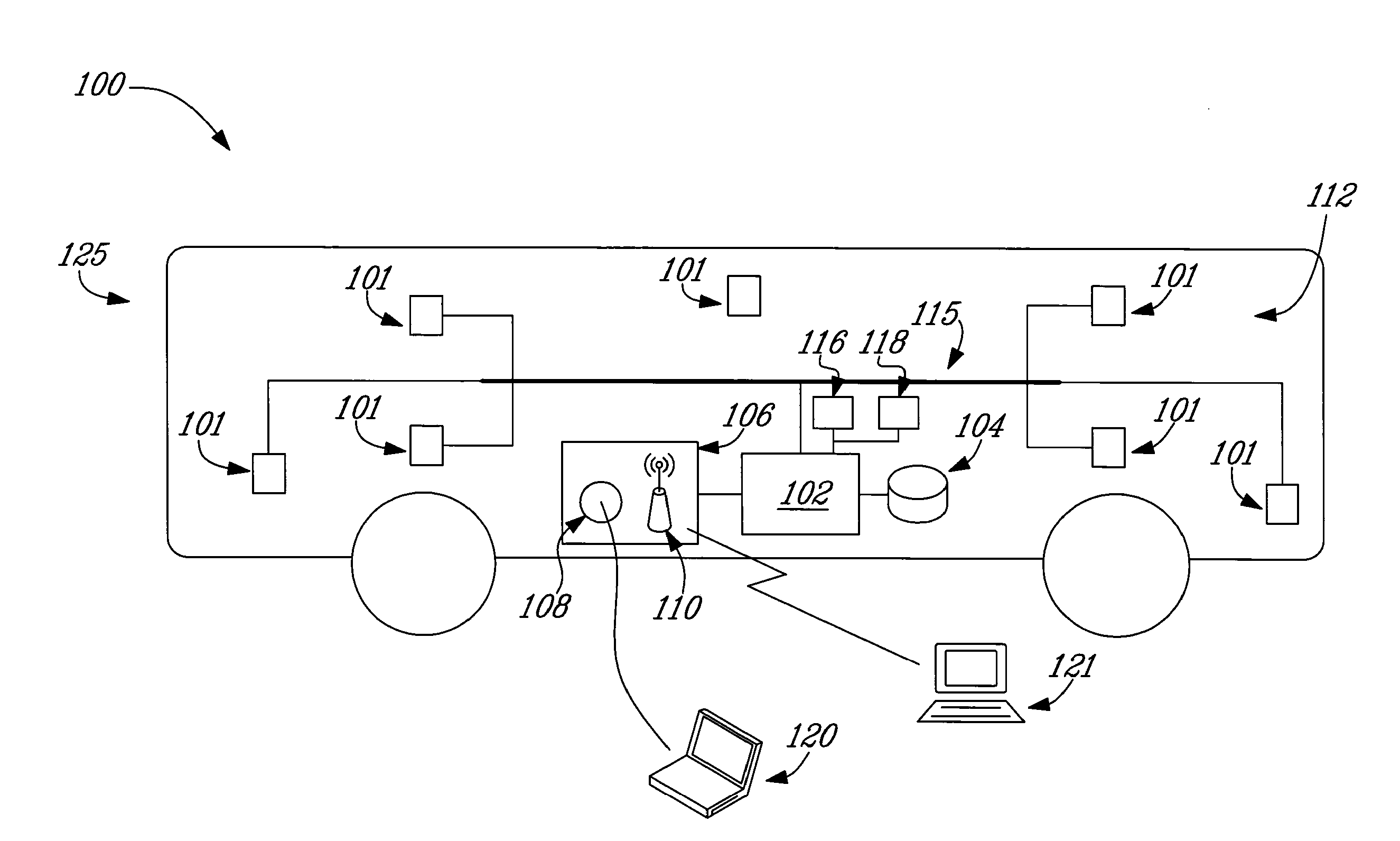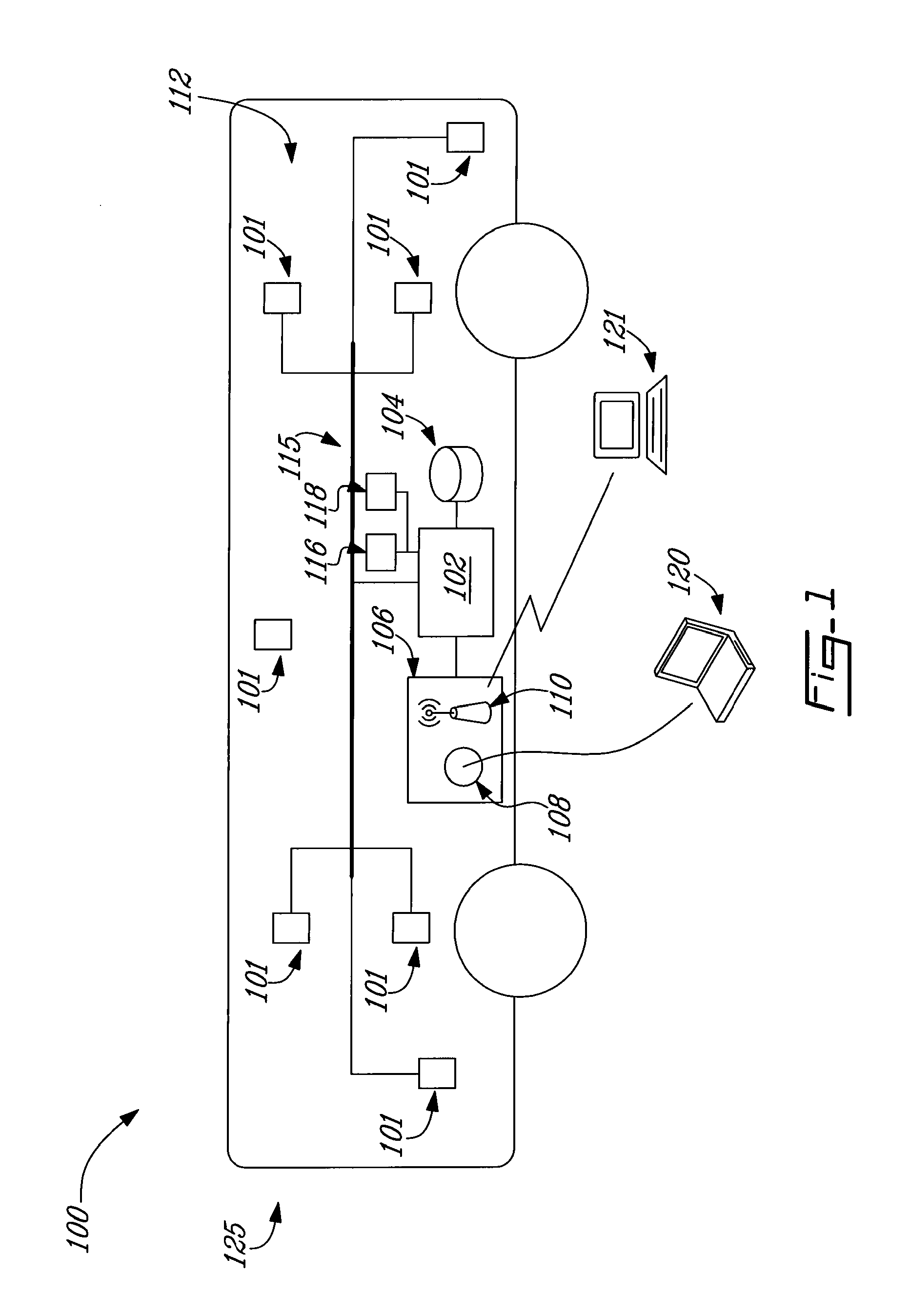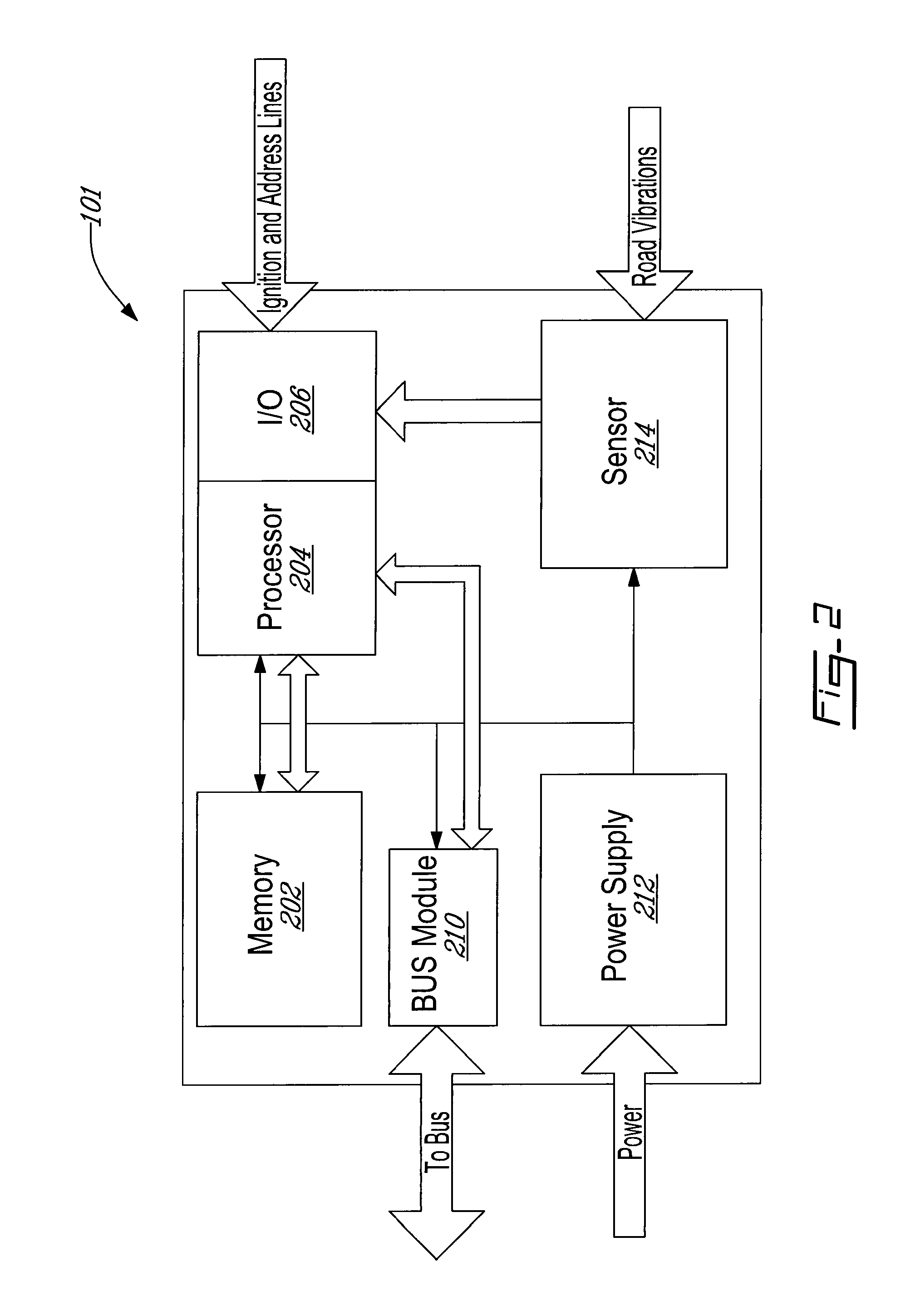System and method for monitoring operation of vehicles
a vehicle and monitoring system technology, applied in the field of vehicle monitoring system and method, can solve the problems of wide margins of error in simulation of real-life duty cycle by the best available and most sophisticated techniques, and the inability to accurately reflect the actual conditions encountered by particular vehicles in servi
- Summary
- Abstract
- Description
- Claims
- Application Information
AI Technical Summary
Benefits of technology
Problems solved by technology
Method used
Image
Examples
Embodiment Construction
[0026]FIG. 1 shows, in block diagram form, an example of a system 100 for gathering data relating to the structural loading or other operational condition(s) of a transit or other vehicle in accordance with the invention. In the embodiment shown, system 100 is installed in a vehicle 125 and is adapted to interact with one or more diagnostic / maintenance tools 120,121 through, for example, the exchange of various command and data signals. System 100 comprises a data acquisition system 112 which, in the embodiment shown, includes one or more on-board (or “central”) system controllers 102, memory(ies) 104, data bus(es) 115, input / output component(s) 106, and one or more data acquisition devices 101 which may be attached or attachable to various portions and / or systems of the vehicle 125.
[0027]Data acquisition device(s) 101 may be configured to gather, and process, communicate, and / or store, data relating to the structural loading or other operational condition(s) of a vehicle 125 to whi...
PUM
 Login to View More
Login to View More Abstract
Description
Claims
Application Information
 Login to View More
Login to View More - R&D
- Intellectual Property
- Life Sciences
- Materials
- Tech Scout
- Unparalleled Data Quality
- Higher Quality Content
- 60% Fewer Hallucinations
Browse by: Latest US Patents, China's latest patents, Technical Efficacy Thesaurus, Application Domain, Technology Topic, Popular Technical Reports.
© 2025 PatSnap. All rights reserved.Legal|Privacy policy|Modern Slavery Act Transparency Statement|Sitemap|About US| Contact US: help@patsnap.com



